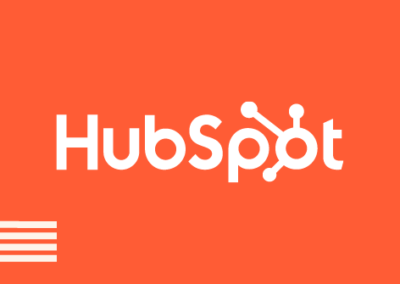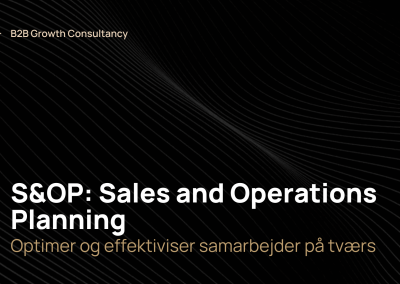Do you have a lot of contacts in your CRM system, and do you find it difficult to get an overview of which leads are ready to make a purchase? We give you three tips for segmenting the customer database in HubSpot, so you can customize the sales work.
If you lack an overview of the organization’s customer database, you may end up spending a lot of wasted time communicating with potential customers, who are not ready to make a purchase. And not only that – you can also easily seem invasive, and this has rarely been the best way to obtain long-lasting customer relationships.
With customer segmentation in HubSpot, you can target communication and sales work. This way you ensure, that you only talk to those who have a need and that they get the right information at the right time.
There are many different methods for customer and target group segmentation, but in this article, we look at three of our favorites:
- Customer surveys
- Lead scoring
- Target lists
Below, we review the three methods that can help you increase your B2B sales one by one, so stay tuned.
RELATED ARTICLE: B2B segmentation – understand your customers and sell more
1) Conduct customer surveys
For this segmentation process, you can either use HubSpot CRM or an integrated software (e.g., SurveyMonkey, NPS. Today, etc.). The goal is to conduct customer surveys that allow you to separate the leads from each other. Usually through questions about job title, company, purchase of previous products, etc.
Loyalty indications: As a HubSpot partner, we at Radiant also have a lot of experience in associating ‘NPS’ tools in customer surveys, which is a method of measuring a customer’s loyalty to a given company. It is an integral part of our Sales as a Service.
With the answers at hand, you can then place the leads in groups or on lists, which can be used when sending automated e-mails or other marketing material to warm up the leads to the sales department.
2) Use lead scoring
It’s no secret that we’re big advocates of using lead scoring in HubSpot. It is an effective method of segmenting potential customers as cold, medium, or hot leads, and an important part of a streamlined sales process.
Working with lead scoring, you must create point criteria for your leads, based on what they do on the website; what pages they look at, how many times they have visited the product or contact page, what they have downloaded, etc.
The possibilities with lead scoring are endless, and the more you adjust the criteria, the more accurate the result will be. We always recommend, that the lead scoring model is prepared in close collaboration between the marketing and sales departments, so that all points on the buying journey are accounted for.
RELATED ARTICLE: Use lead scoring in HubSpot to increase B2B sales
3) Create target lists in HubSpot
Lists are an eminent tool for segmenting customers, as the lists can be dynamic and based on customers’ digital behavior. You can create lists based on what your contacts have downloaded and what pages on the website they have visited. You can also use the customer survey to segment by area of interest, or you can make lists based on what material your contacts have downloaded – e.g., e-books, checklists, whitepapers, etc.
This type of segmentation is relevant in connection with newsletters, just as it also works well, when the company, for example, publishes a new e-book that a group of leads might be interested in – and which may be just what it takes to move them from a medium to a hot lead.
Why segment the customer database?
- Knowlegde of the customers
- Profitable customers
- Accurate value addition
- Customer and contact information
- Market data and key figures
Does it sound difficult and pointless to start segmenting your customer database? We can guarantee that it’s not. The vast majority of B2B companies can benefit from a cleanup of the database, and both sales and marketing can benefit from grouping the contacts.
When you send emails to one of these lists, you ensure that the right leads receive the right information. This can contribute to a better conversion rate. For example, you can to all customers, who have purchased a given product, send separate emails with information about another product that is similar – a good basis for additional sales.
At the same time, customer segmentation is an effective tool, if sales reps need to call existing customers with a campaign; they can just call the customers, who have already expressed interest in the particular product, or are qualified as a hot lead through your lead scoring system.
Regardless of how you choose to approach your customer segmentation, we would claim that it will be a great benefit for both the marketing and sales department.
How does Radiant work with segmentation?
The first thing we do to improve your sales is to find the most attractive customers for your business through market data and relevant criteria. First, we look at your customer base, after which we refine it with criteria based on behavior, earnings, customer loyalty, and potential. Then, we have a better understanding of what your attractive customers look like. We then clone the criteria into the market in Denmark, Norway, and Sweden. In conclusion, we get a clear picture of your most attractive potential customers – fully integrated into your systems and in our Sales as a Service concept.



